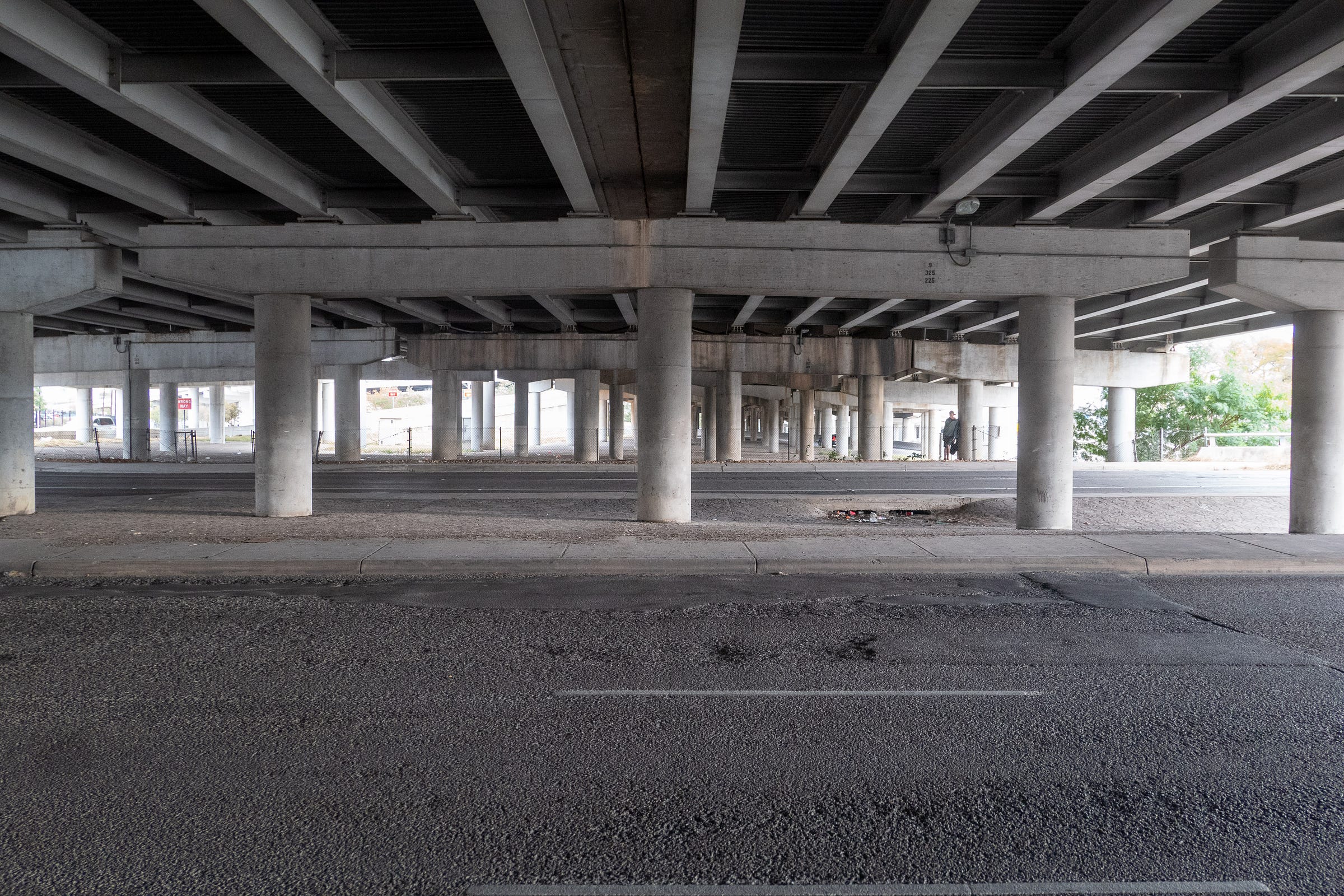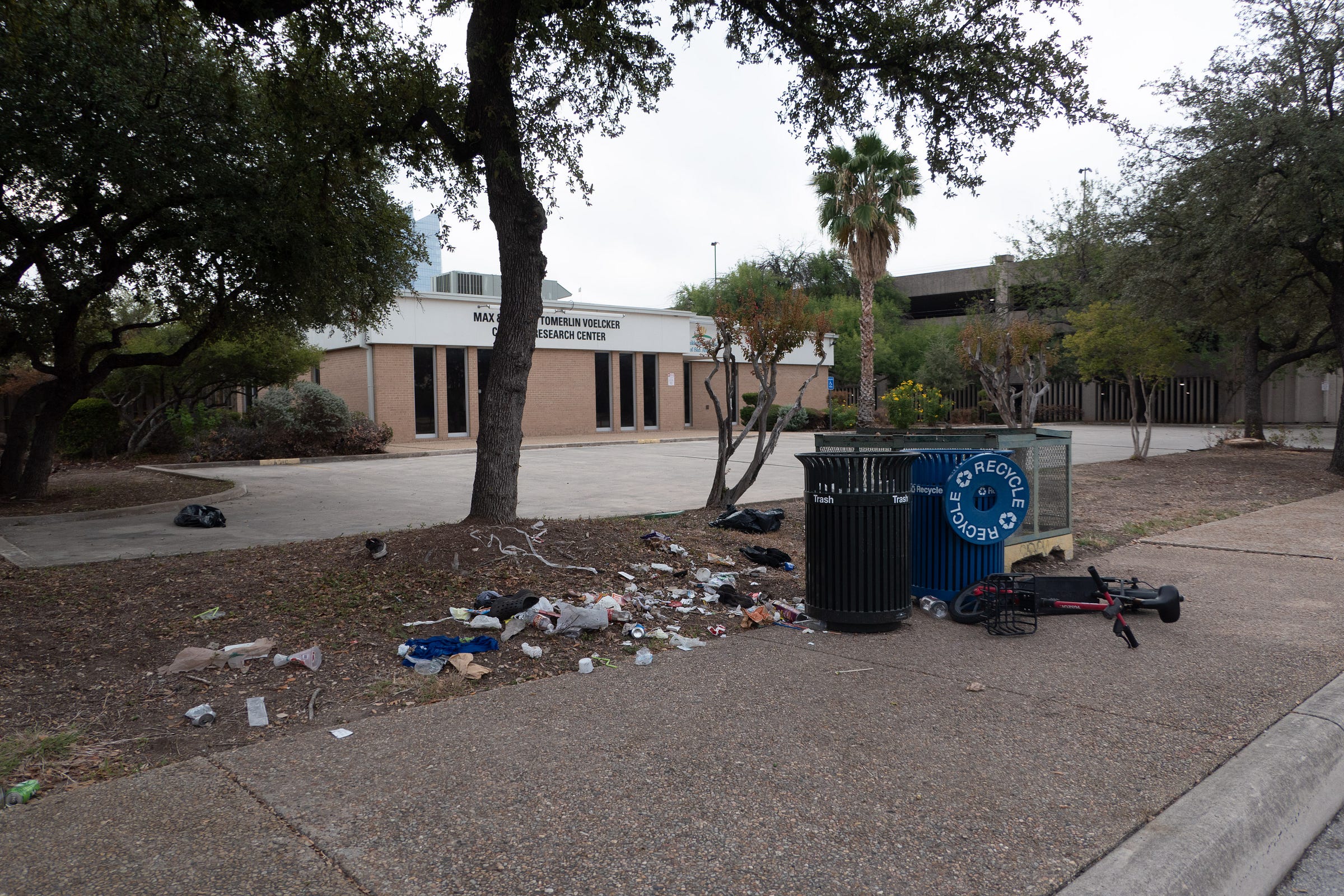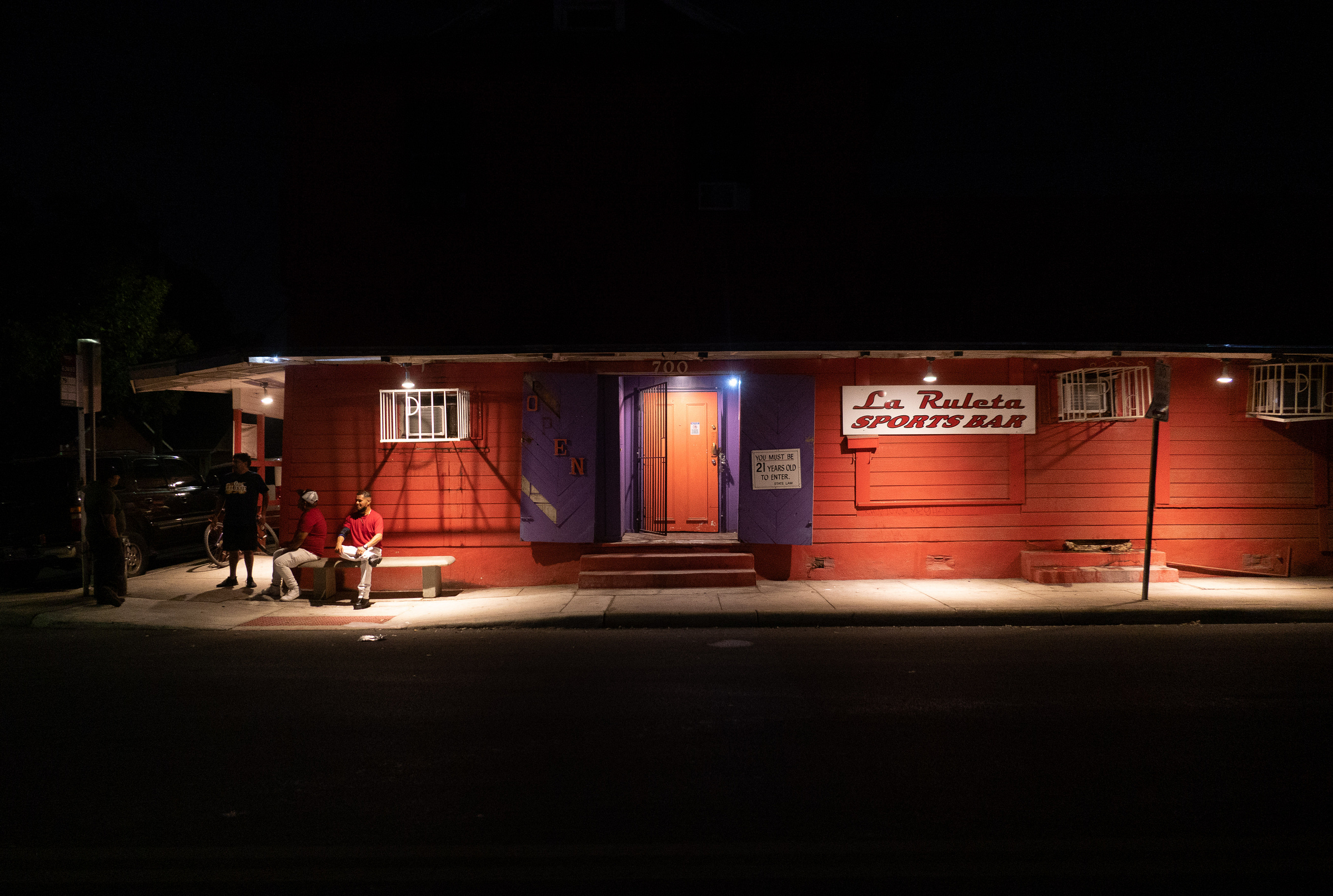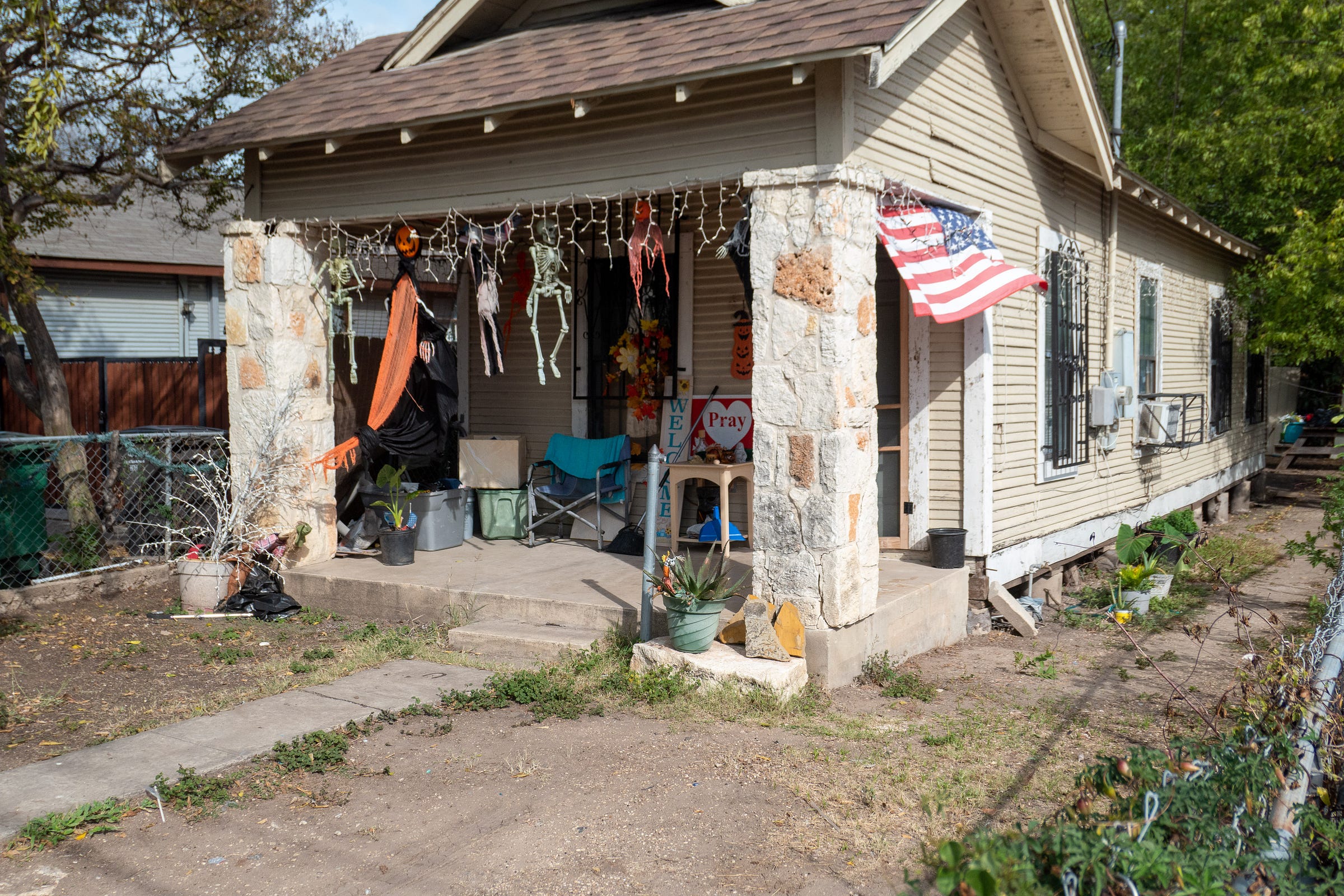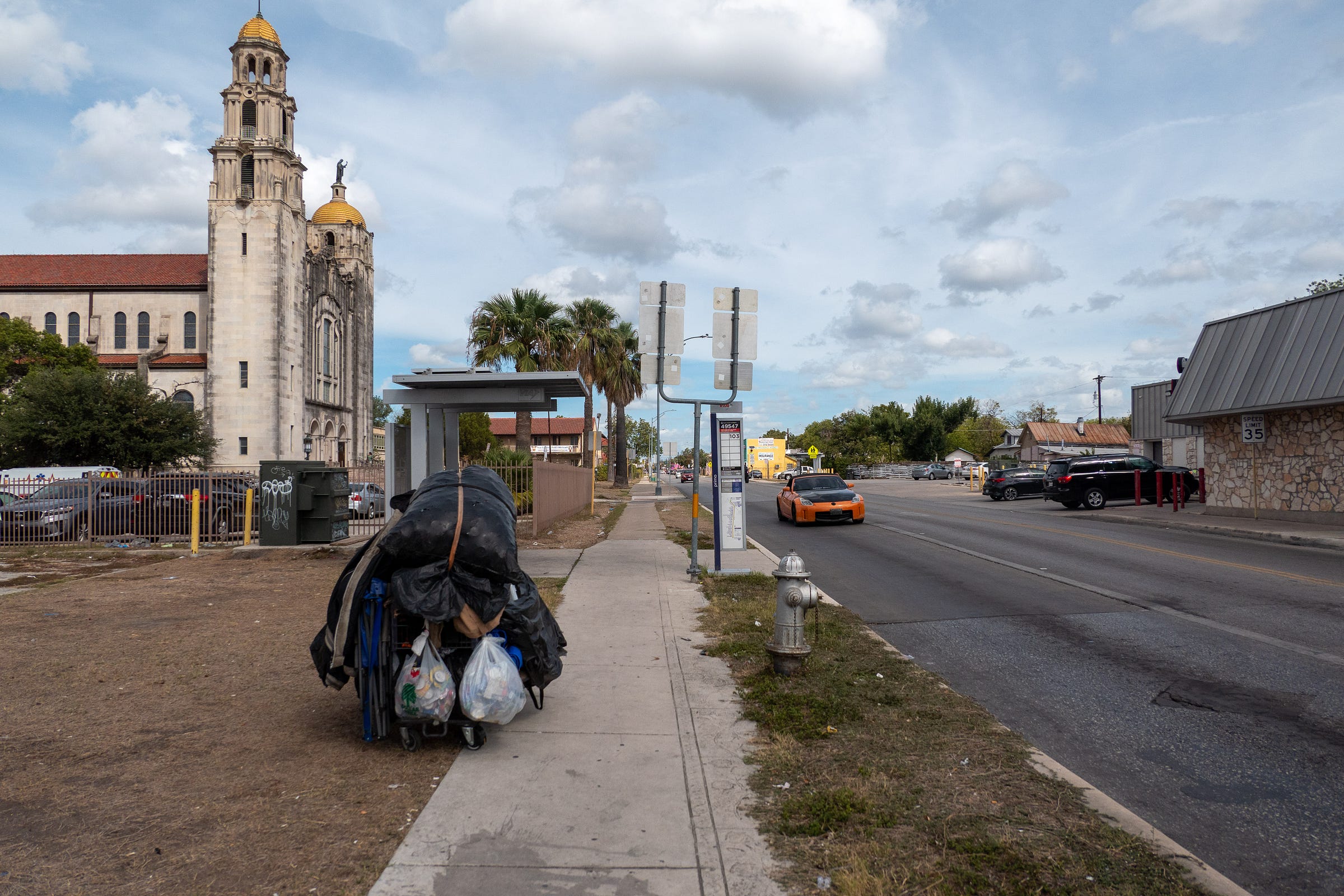I didn’t want to write this post today. I wanted to write it tomorrow after spending another day walking San Antonio. But it’s raining now and I have no car. Stuck in a corner room of a motel that empties after 7 am, beyond the desperate. I’m here with ex inmates clasping vouchers and addicts who’ve lucked into temporary shelter.
There is only one car in the parking lot, with a woman sitting in it for a few hours now, listening to the radio. Scattered around the edges are men looking for temporary work, sitting on upturned buckets, their tools at their feet. They spent all yesterday and all this morning doing that. Chatting with each other in Spanish, only jumping up to surround work trucks that whisks a lucky few away.
The adjacent McDonald’s, which shares the parking lot, is designed to keep trouble out. It’s guarded by a large slow man, who’s quick to eject anyone he doesn’t feel right about. Inside the three TV’s blast a cooking show, each timed slightly different. Only the numbest can ignore the jarring cacophony.
San Antonio’s historic downtown is steps away, just beyond an elevated expressway that encircles it. Eight elevated lanes of pillars and fumes. A modern day gated city — with the stench of urine as its moat, and solitary men, some barking inner thoughts, others throwing garbage at pillars, as the sentries.
Inside that gate of cement pillars is history and tourist. But they are confined to a river-walk. A sliver of the good life — cafes, bars, speciality shops — sold by its proximity to one US’s few foundational folk myths.
Outside of that sliver, it all goes downhill fast. History can’t put a shine on whats a stereotypical struggling US town. A place where the energy pulsates from the outer beltway, and the center’s on life support — one failed urban renewal project after another. Like an archaeological strata of past bulwarks against the decline.
Those cities are a dime a dozen in the US, so it makes sense San Antonio embraces its history as a source of pride. As a way to distinguish itself. Baltimore with the Alamo.
But the Alamo is a quirk, a notable one. A small building in a very big city. What really distinguishes San Antonio is its Mexican-American culture.
It’s a minority majority city, and that’s why I came.
To show that my cartoonish description isn’t entirely fair. That San Antonio isn’t just an outer ring of suburban sprawl with a hollowed out center.
That between the two is mile after mile of functional working class Mexican-American neighborhoods.
Simple homes festooned with American flags, crosses, and yards of ceramic frogs. Fathers playing soccer with their kids. Mothers juggling babies. Families heading off in minivans and F150s to Sunday mass.
The American dream, written in Spanish.
That functionality, that American dream, is there, yet it’s riddled with fissures.
The middle of San Antonio is poor, and the scourge of American poverty — homelessness, drugs, and crime — is right there out in the open. At risk of taking it all down.
Go inside the Basilica of the Little Flower and you see all that’s right with this new American dream.
Go outside, walk about half a block down, and you see an intersection of chaos. Homeless camps, open air drugs, and people walking around with open wounds, hair matted with vomit, and eyes emptied of hope.





